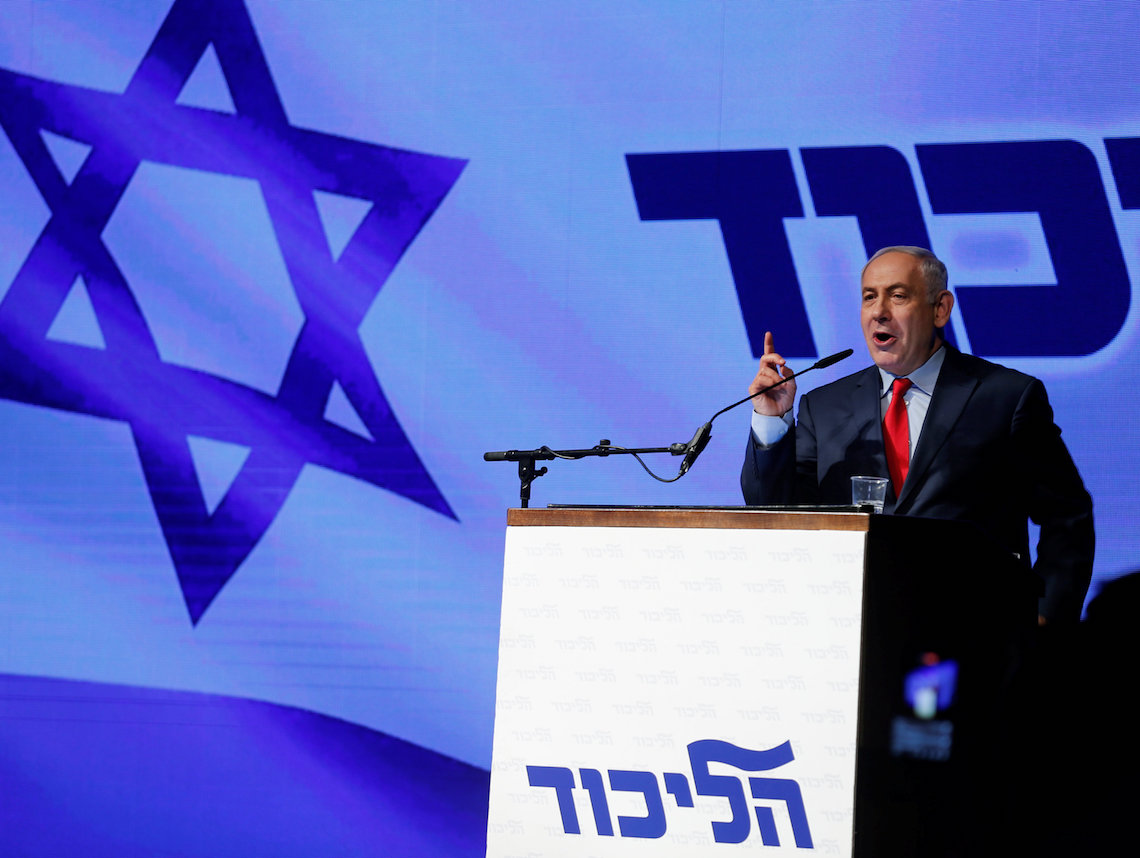 Israeli Prime minister Benjamin Netanyahu speaks during an event by his Likud Party in Tel Aviv, Israel August 9, 2017. Photo by Amir Cohen/REUTERS.
Israeli Prime minister Benjamin Netanyahu speaks during an event by his Likud Party in Tel Aviv, Israel August 9, 2017. Photo by Amir Cohen/REUTERS.
This is a short update of Israel’s Election Handbook from yesterday. We recommend that you read both to get the fuller picture.
Many media outlets conducted polls the day after new elections were announced. So, we use the opportunity to show how these polls change the picture of Israel’s political blocs’ map.
The bottom line is still similar to what we said yesterday: “the right-religious bloc does not have more than 60 seats and thus cannot form a coalition by itself. It will have to be joined by at least one of the centrist parties. The center and the left can theoretically form a majority – but only if they can agree to rely on the United Arab Party, an unlikely scenario. If things stay the way they are, the likely coalition will be one similar to the current coalition. The right, plus a party or two from the center – Netanyahu will have room for negotiations”.
We offer two options for potential political blocs. You can see the list of parties in each bloc for each option on the right.

If you are interested in averages, here is how the polls of the last 48 hours split the three blocs (the numbers refer to average number of projected seats in the Knesset):
























 More news and opinions than at a Shabbat dinner, right in your inbox.
More news and opinions than at a Shabbat dinner, right in your inbox.